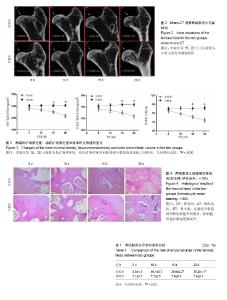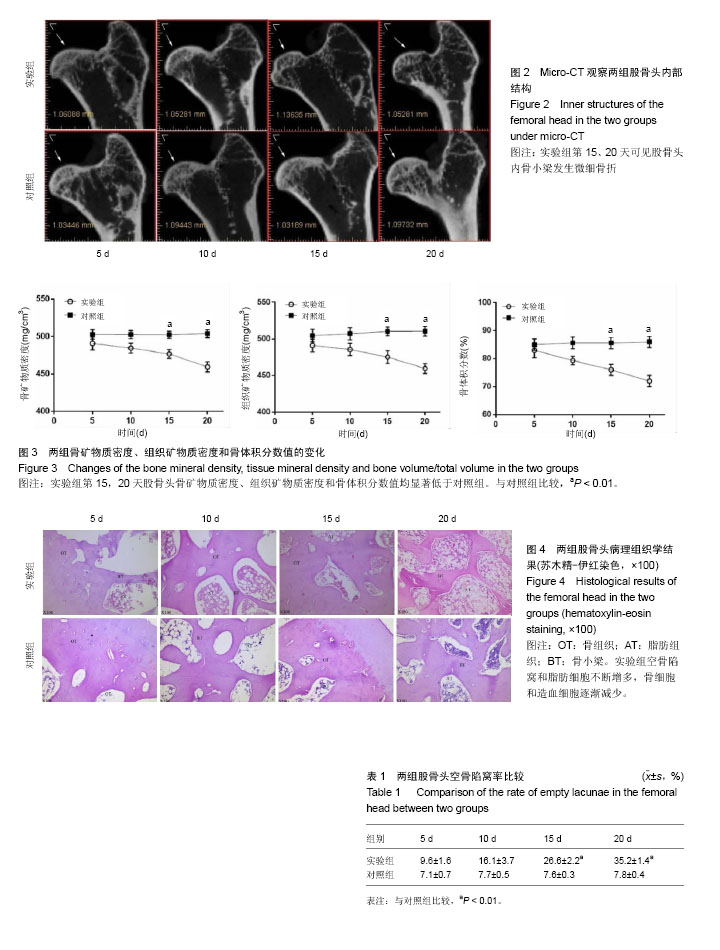| [1] Wu B, Dong Z, Li S, et al. Steroid-induced ischemic bone necrosis of femoral head: Treatment strategies. Pak J Med Sci.2015;31(2): 471-476. [2] Qi X, Zeng Y.Biomarkers and pharmaceutical strategies in steroid-induced osteonecrosis of the femoral head: a literature review. J Int Med Res.2015;43(1): 3-8.[3] Zalavras CG, Lieberman JR. Osteonecrosis of the femoral head: evaluation and treatment. J Am Acad Orthop Surg. 2014;22(7):455-464. [4] Qiang H, Liu H, Ling M, et al. Early Steroid-Induced Osteonecrosis of Rabbit Femoral Head and Panax notoginseng Saponins: Mechanism and Protective Effects. Evid Based Complement Alternat Med. 2015;2015: 719370.[5] Swarup I, Lee YY, Movilla P, et al. Common factors associated with osteonecrosis of the femoral head in young patients requiring total hip arthroplasty. Hip Int. 2015;25(3): 232-236. [6] Issa K, Pivec R, Kapadia BH, et al. Osteonecrosis of the femoral head: the total hip replacement solution. Bone Joint J. 2013;95-B(11 Suppl A): 46-50. [7] Zhang C, Ma J, Li M, et al.Repair effect of coexpression of the hVEGF and hBMP genes via an adeno-associated virus vector in a rabbit model of early steroid-induced avascular necrosis of the femoral head Transl Res. 2015;166(3): 269-280. [8] Yin H, Yuan Z, Wang D. Multiple drilling combined with simvastatin versus multiple drilling alone for the treatment of avascular osteonecrosis of the femoral head: 3-year follow-up study. BMC Musculoskelet Disord.2016;17(1):344.[9] 中国医师协会骨科医师分会显微修复工作委员会,中国修复重建外科专业委员会骨缺损及骨坏死学组,中华医学会骨科分会显微修复学组,等.成人股骨头坏死临床诊疗指南(2016).中华骨科杂志,2016,36(15):1-11[10] Kerachian MA, Séguin C, Harvey EJ. Glucocorticoids in osteonecrosis of the femoral head: a new understanding of the mechanisms of action. J Steroid Biochem Mol Biol. 2009;114(3-5):121-128.[11] 喻钧伦,罗天友,吴少平,等. 激素联合脂多糖建立股骨头缺血坏死模型兔的技术改良[J]. 中国组织工程研究, 2015,19(20): 3129-3133.[12] Freeman TA,Patel P,Parvizi J, et al. Micro-CT analysis with multiple thresholds allows detection of bone formation and resorption during ultrasound-treated fracture healing.J Orthop Res.2009;27(5): 673-679.[13] Miyanishi K, Yamamoto T, Irisa T, et al. A high low-density lipoprotein Cholesterol to high-density lipoprotein cholesterol ratio as a potential risk factor for corticosteroid induced osteonecrosis in rabbits. Rheumatology.2001; 40(2): 196-201.[14] Assouline-Dayan Y, Chang C, Greenspan A, et al. Pathogenesis and natural history of osteonecrosis. Semin Arthritis Rheum. 2002;32(2):94-124.[15] Powell C, Chang C, Gershwin ME. Current concepts on the pathogenesis and natural history of steroid-induced osteonecrosis. Clin Rev Allergy Immunol. 2011;41(1): 102-113.[16] Lin T, Liu J, Yang S. Relation between the development of osteoporosis and osteonecrosis following glucocorticoid in a rabbit model.Indian J Orthop. 2016;50(4):406-413.[17] Weinstein RS, Nicholas RW, Manolagas SC. Apoptosis of osteocytes in glucocorticoid-induced osteonecrosis of the hip. J Clin Endocrinol Metab.2000; 85(8):2907-2912.[18] Xie X, Pei F, Wang H, et al. Icariin: A promising osteoinductive compound for repairing bone defect and osteonecrosis. J Biomater Appl.2015;30(3):290-299.[19] Li J, Fan L, Yu Z, et al. The effect of deferoxamine on angiogenesis and bone repair in steroid-induced osteonecrosis of rabbit femoral heads.Exp Biol Med (Maywood). 2015;240(2):273-280.[20] Wang F, Wang Y, Hu N,et al.Risk-factors, pathogenesis, and pharmaceutical approaches for treatment of steroid-induced bone infarction of femoral head. Acta Pol Pharm. 2016;73(3): 557-563.[21] Loi F, Córdova LA, Pajarinen J, et al. Inflammation, fracture and bone repair. Bone. 2016;86:119-130. |

